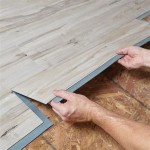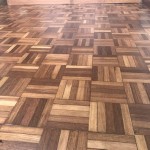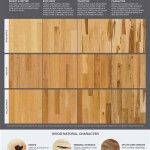```html
High Grade Laminate Flooring: A Comprehensive Guide
High grade laminate flooring represents a significant advancement in flooring technology, offering a compelling alternative to traditional hardwood, tile, and carpet. It combines aesthetic appeal with impressive durability and cost-effectiveness, making it a popular choice for both residential and commercial spaces. Understanding the composition, benefits, and installation considerations of high grade laminate is crucial for making informed decisions about flooring solutions.
Laminate flooring consists of several layers fused together under high pressure. The foundational layer is typically a melamine-impregnated backing, providing stability and resistance to moisture. Above this lies the core board, usually composed of high-density fiberboard (HDF) or medium-density fiberboard (MDF). The core board determines the floor's overall thickness and impact resistance. An image layer follows, offering a photorealistic depiction of wood, stone, or other desired materials. Finally, a transparent wear layer protects the image layer from scratches, stains, and fading. The quality of each layer, particularly the core board density and wear layer thickness, determines the overall grade and performance of the laminate flooring.
Key Point 1: Understanding the Composition and Quality Factors
The quality of high grade laminate flooring hinges on several critical factors related to its composition. The density of the core board, whether HDF or MDF, directly impacts its resistance to indentation and moisture absorption. Higher density cores offer superior performance in high-traffic areas and environments prone to spills.
The wear layer, measured in microns, is the primary defense against surface damage. A thicker wear layer, often exceeding 12 mils (approximately 0.3 millimeters), provides enhanced protection from scratches, scuffs, and stains. High-quality wear layers often incorporate aluminum oxide particles for increased abrasion resistance. The AC (Abrasion Class) rating, ranging from AC1 to AC5, further indicates the durability of the wear layer. AC3 is generally suitable for residential use, while AC4 and AC5 are designed for commercial applications with heavy foot traffic.
The image layer's printing resolution and texture also contribute to the overall aesthetic appeal of the laminate flooring. High-resolution printing techniques create realistic wood grain patterns and stone textures, while embossed-in-register (EIR) textures align the surface texture with the printed image, enhancing the authenticity of the flooring.
Furthermore, the quality of the locking system plays a crucial role in the ease of installation and the long-term stability of the floor. A robust locking mechanism ensures a tight, seamless connection between planks, preventing gaps and minimizing the risk of water damage.
Key Point 2: Advantages of Choosing High Grade Laminate Flooring
High grade laminate flooring offers a multitude of advantages compared to other flooring options. One of the most significant benefits is its cost-effectiveness. While hardwood flooring can be quite expensive, high grade laminate provides a similar aesthetic at a fraction of the cost. This makes it an attractive option for budget-conscious homeowners and businesses.
Durability is another key advantage. As mentioned earlier, the wear layer protects the flooring from scratches, stains, and fading, making it suitable for high-traffic areas and homes with pets and children. Some high grade laminate products are even water-resistant or waterproof, making them suitable for bathrooms and kitchens.
Maintenance is relatively simple, requiring only regular sweeping, vacuuming, and occasional damp mopping. Unlike hardwood, laminate flooring does not require waxing, polishing, or refinishing. This reduces the long-term maintenance costs and effort associated with other flooring materials.
Installation is often easier and faster than installing hardwood or tile. Many laminate flooring products feature click-lock systems, allowing for a floating floor installation that does not require adhesive or nails. This can significantly reduce installation costs, particularly for DIY enthusiasts.
Finally, high grade laminate flooring offers a wide range of design options. It is available in a variety of styles, colors, and textures, mimicking the look of natural wood, stone, and tile. This allows consumers to achieve their desired aesthetic without the expense and maintenance requirements of natural materials.
Key Point 3: Installation and Maintenance Considerations
Proper installation is crucial for ensuring the longevity and performance of high grade laminate flooring. Before installation, it is essential to prepare the subfloor. The subfloor must be clean, level, and dry. Uneven surfaces can lead to uneven wear and potential damage to the flooring.
An underlayment is typically required for laminate flooring installation. The underlayment provides cushioning, sound insulation, and moisture protection. Some laminate flooring products come with an attached underlayment, simplifying the installation process.
Acclimation is another important factor. Laminate flooring should be acclimated to the room's temperature and humidity for at least 48 hours before installation. This allows the flooring to expand or contract to its normal dimensions, preventing buckling or gapping after installation.
During installation, it is crucial to follow the manufacturer's instructions carefully. Proper alignment of the planks and a secure locking mechanism are essential for a seamless and durable floor.
Maintaining high grade laminate flooring is relatively straightforward. Regular sweeping or vacuuming removes dirt and debris that can scratch the surface. Damp mopping with a laminate-specific cleaner is recommended for deeper cleaning. Avoid using excessive water, as it can seep into the seams and damage the core board.
Protecting the flooring from heavy furniture and sharp objects is also important. Use furniture pads under table legs and chair legs to prevent scratches and dents. Avoid dragging heavy objects across the floor. Using doormats at entrances can help to minimize the amount of dirt and debris tracked onto the floor.
Addressing spills promptly is crucial for preventing stains. Wipe up spills as soon as possible with a clean, dry cloth. Avoid using abrasive cleaners, as they can damage the wear layer.
While high grade laminate flooring is durable, it is not indestructible. With proper installation and maintenance, it can provide years of beauty and performance. Understanding the composition, advantages, and installation considerations of high grade laminate flooring ensures a well-informed decision and a successful flooring project.
```
The Best Laminate Flooring Of 2024

Walnut Water Resistant Laminate Flooring For Kitchen

High Quality Laminate Flooring In San Francisco Floorcraft

Choosing The Best Laminate Flooring For Your Home Canadia

High Grade 12mm And 8mm Ac3 Laminate Flooring China Made In Com

Monte Carlo Megaclic Metropolitan Collection 12 3mm Laminate Floor United Whole Flooring

High Grade Wood Grain Flooring Laminate China Floor Tile Made In Com

High Quality Laminate Flooring Over 60 Designs
Laminate Flooring Everyday Low S Floor Decor

Vinyl Vs Laminate Flooring Pros Cons And Differences Forbes Home
Related Posts








